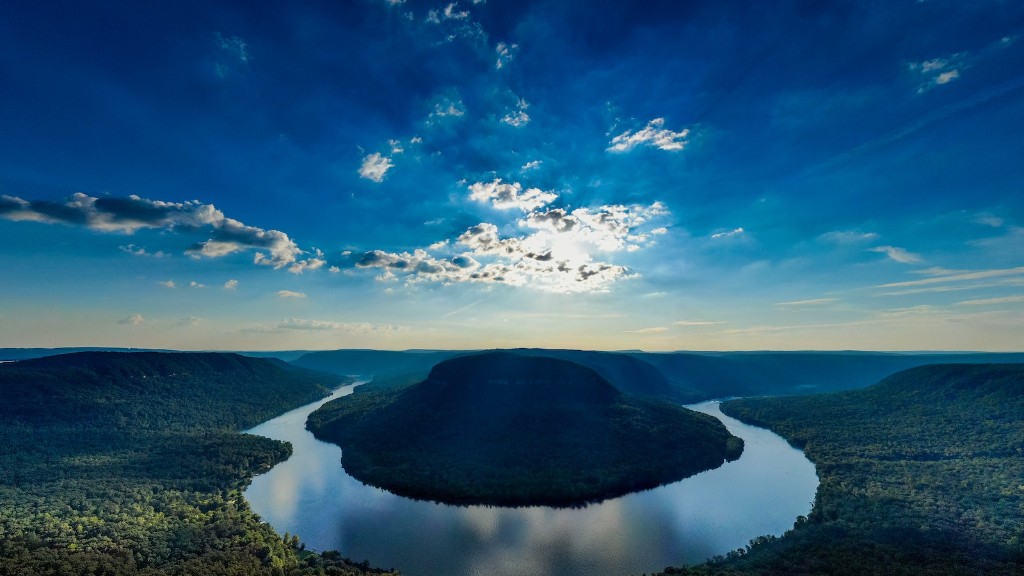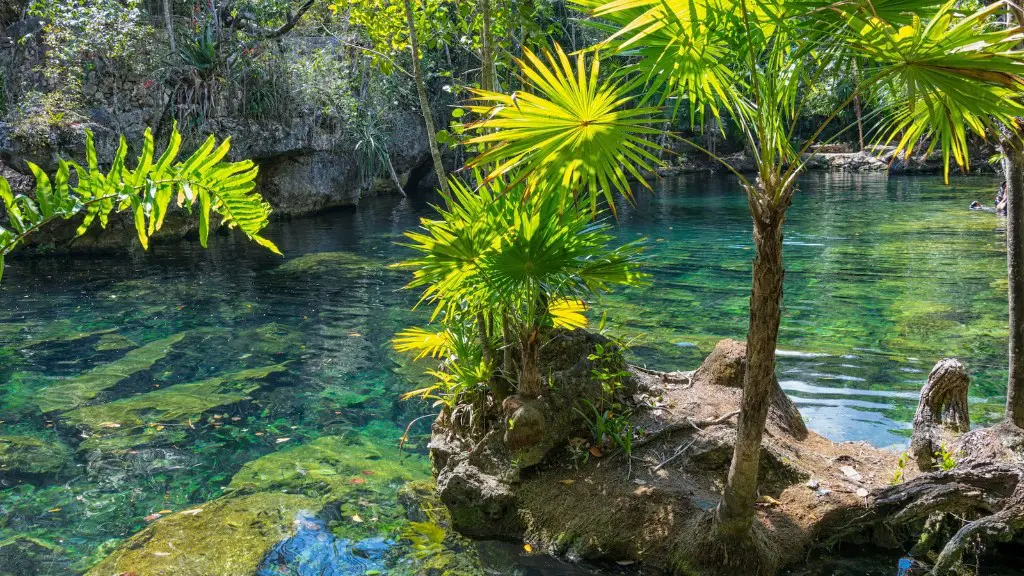Largely acknowledged as the longest river on the planet, the Nile River has been a source of life, sustenance and economic value for Egyptians for centuries. It is no surprise that the ancient civilization that thrived along the banks of the river referred to it as ‘Iteru’ which means ‘Great River’. Winding through nine countries, the Nile has always been a subject of much admiration and fascination.
The beginning of the Nile is usually considered to be Lake Victoria, which is located in Uganda in Africa. From its source at Lake Victoria, the river flows north towards the Mediterranean Sea. Along its journey, the river traverses through Uganda, Tanzania, Rwanda, Burundi, South Sudan, Congo (Democratic Republic), Sudan and Egypt.
It’s difficult to calculate the exact length of the Nile as most of its northern portion passes through arid and inhospitable terrain, making it hard to measure. Nonetheless, scholars estimate that the river is about 6,853 kilometres long with a drainage basin of about 3,349,000 square kilometres. The Nile’s flow rate stands at around 2,830 cubic metres of water per second at Aswan, a city in the southern Egypt.
The Nile serves many purpose and is an important river in terms of its socio-economic implications. It not just supports life along its banks by serving as a source of water for both humans and animals, but it also acts as a major transport route for goods from one place to another.
In addition to being a source of life, the Nile is also a source of livelihood for most local villagers. The riparian vegetation along the banks of the river serves as sources of both food and fuel for many generations. Local villagers also use parts of the river for fishing and other activities such as boat rides to explore the surroundings.
The importance of the Nile dates back to ancient times. For the Egyptians, the river became a key component of their daily lives. During annual flooding of the river, the fertility of the soil increases, which in turn made it easy for the ancient Egyptians to farm crops in the surrounding areas. This also made it easy for them to lead a more comfortable lives than their other desert-dwelling counterparts.
The Nile finally empties into the Mediterranean Sea in the northern Egypt. As the river flows towards the sea, it irrigates the surrounding desert lands forming natural oases and swamps. The delta of the Nile is known as the Nile Delta, which is one of the youngest landforms in the world and is an integral part of the Northern Africa landscape.
The Impact of Dams
Despite its many uses, the Nile is also facing an additional threat due to the construction of various dams. As per reports, Ethiopa has built and is in the process of building additional dams on the Blue Nile and White Nile, to generate electricity and supply agricultural development projects. This has raised concern all over the world, leading to increased diplomatic tension between Ethiopia and its downstream countries, Egypt and Sudan.
The construction of the dams and their subsequent impact on the natural flow of the river have led to reduced water levels and a drop in soil fertility in the surrounding regions. It has also posed a threat to the local livelihoods of the people living along the river who rely on its water for agricultural and fishing activities.
In addition, the diversion of water through the damming has had a negative effect on the wildlife along the Nile River, leading to an increase in the death of aquatic animals. This has damaged the fragile ecology of the Nile, which in turn has led to the depletion of fish stocks.
The Nile is a living part of the African continent and its importance cannot be overstated. While it is important for countries to take steps for economic development, it is equally important for them to consider the downstream effects of any construction on the environment.
The Impact of Climate Change
Climate change has had a tremendous effect on the Nile. With the rise of temperatures across the continent, water shortages have become a major concern in many countries. Lack of adequate water affects the flora and fauna along the river’s path, as well as the livelihood of the indigenous people that depend on it for their sustenance.
The increase in global temperatures has also led to the melting of glaciers and ice sheets located high up in the mountains, which have further reduced the river’s water flow. Over the years, this has led to an increase in poverty and hunger in many countries located along the river.
Another impact of climate change has been the increase in extreme weather events such as heavy rains, floods and droughts. These events have caused massive destruction in terms of loss of lives, displacement of people, destruction of property and livelihood. In addition, the rising sea levels have resulted in saltwater intrusion into the Nile’s delta, which has affected human life and the environment along the river.
Despite the increasing threat of climate change, the Nile still provides a lifeline for many societies and is a crucial source for food and water. Therefore, countries must take steps to ensure that their environmental policies take into account the effects of climate change on the life of the river.
Agriculture along the River
Agriculture has a major role to play in the development of many countries along the Nile. It serves as a source of sustenance and livelihood for millions of people living along the banks of the river. Apart from local villagers, it is also a major source of food for the many cities and towns that line the path of the river.
Over the years, agriculture along the river has gone through a major transformation due to the introduction of improved farming techniques and the use of fertilizers and pesticides. This has made farming more efficient and reliable, helping local people look after their fields and increase their yields.
These improved techniques along with the availability of irrigation from the Nile have also aided in the growth of commercial crops such as cotton and sugarcane. This has benefited the economies of many countries along the river as these crops are in great demand across the continent.
The abundance of fertile land along the river has also provided the locals with an opportunity to practice small-scale farming. This has not only improved their quality of life but it has also provided food security to local communities.
Industrial Activity
Industrial activity also plays an important role in the utilization of the Nile. The river is home to several industries ranging from steel, chemical and oil and gas to food processing and textiles. These industries rely on the river for both their operations and their power generation.
The presence of these industries has significantly improved the local economy and provided employment for thousands of people. In addition, these industries also contribute to the environment by reducing emissions and becoming energy-efficient.
The industrial activity has also presented many challenges. The industries often release pollutants into the river, causing environmental damage and impacting aquatic life. In addition, the presence of these industries has also reduced the availability of freshwater for agricultural and domestic use.
In order to prevent the negative impact of the industries, countries must come up with regulations and policies that can help to regulate the industrial activities and protect the environment.
Commercial Activity
In recent years, commercial activity along the river has been on the rise. Commercial transport between the cities and ports on the Nile has become a major industry, providing a huge boost to the local economy. In addition, the tourism industry has also seen a rise, as the river and its banks provide an ideal location for a variety of tourist activities such as boat rides, sightseeing, fishing and camping.
The commercial activity along the river has led to the growth of small-scale businesses such as restaurants, hotels and other service providers. This has provided employment for the locals and has contributed to the economic development of the region.
However, the increased commercial activity has also had a few negative effects. The increased traffic has caused noise pollution and has also posed a significant risk to wildlife. In addition, the dredging of the river for commercial activities has affected the flow of the river and led to an increase in pollution.
In order to mitigate the negative impacts of commercial activity, governments must create effective regulations and policies to protect the environment and ensure the safety of the river.





